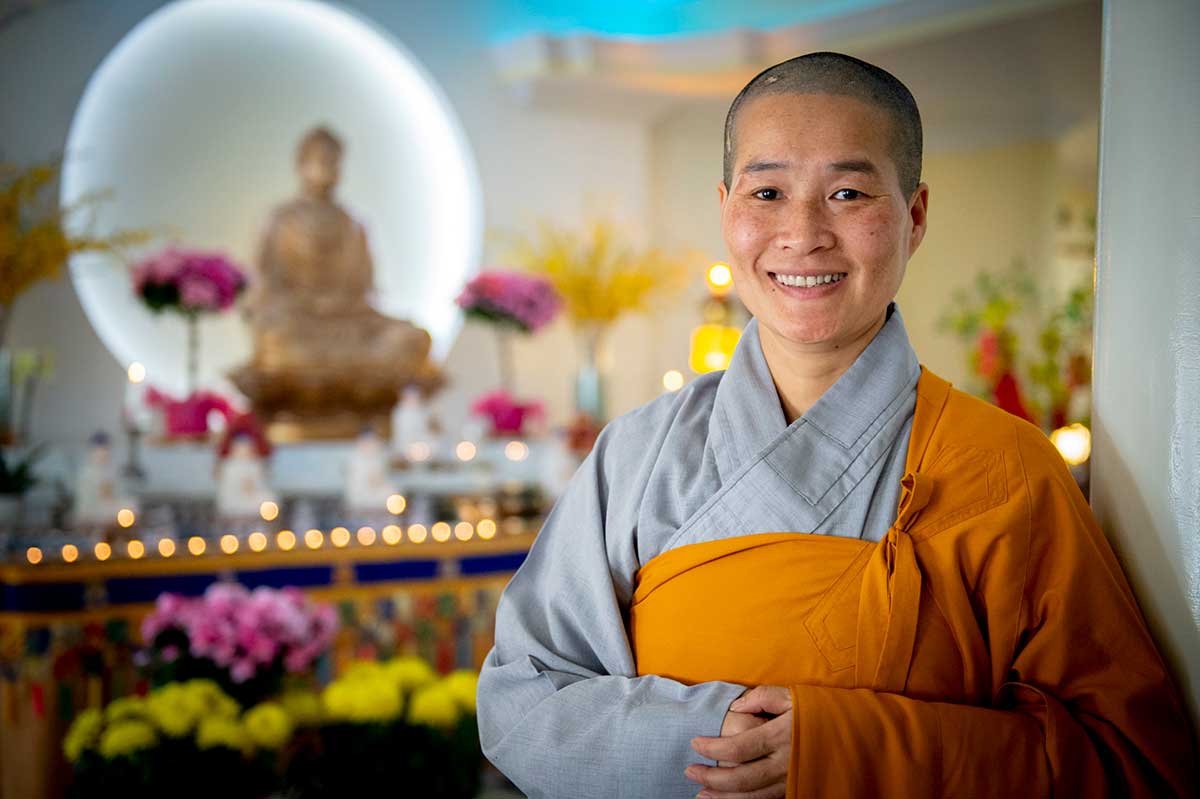

New Orleans’ Little Woods neighborhood stretches out along the southern shoreline of Lake Ponchartrain. Once called “poor man’s Miami Beach,” the area was famous for its fishing camps perched on stilts and piers jutting into the water. In the 1920s, these camps housed restaurants and a few music clubs, but later, only those in Little Woods withstood the onslaught of development planning, including the ambitious East Lakefront Development program proposed by the Orleans Levee Board in 1963. This was the case at least until 1998, when even those camps were reduced to pilings by Hurricane Georges, and in its aftermath when the mayor refused to grant rebuilding permits, citing public health concerns. Today, Little Woods is best known as home to the New Orleans Lakefront Airport.
I had never visited the neighborhood until September 2019 when I learned that Sister Thanh Trang, a Buddhist monk, had returned to New Orleans and established a new temple. After Hurricane Katrina, she resided in a nearby Buddhist center but left the city after a year or so. A few Vietnamese families continued to rely on her to carry out funeral rituals and to provide spiritual guidance and many urged her to return and settle down in New Orleans.
New Orleans is said to be an exceptional city. After the hurricane, the city embraced Vietnamese Americans within this narrative, particularly the New Orleans East neighborhood, centered around Mary Queen of Vietnam Church. But if exceptionalism highlights some stories, it casts shadows on others, overlooking those places and peoples that do not conform to the city’s exuberant storylines. As a cultural anthropologist, I have focused on Buddhist institutions along the Gulf Coast, and how these institutions challenge our understandings of the city and its place in the world. Presently, New Orleans has numerous Buddhist centers, including five Vietnamese temples in the greater metropolitan area, a Thai temple, and other meditation groups. Yet these spiritual communities are seen not of the city, only in the city, reinscribing the persistent trope of Asian Americans as strangers from a distant shore.
How can we instead see Asian Americans as full participants in the process of rewriting New Orleans, inscribing new meanings into the city’s landscape? The large structure that houses Sister Thanh Trang’s Buddhist Center on Edgelake Court today was once the residence of a Baptist pastor. Neighbors claimed he never returned after Katrina and that the building had lay vacant for almost 15 years. Last year Sister Thanh Trang saw a posting for the property just days before it was to be auctioned by a bank. She drove by and walked through an open gate. There she saw a large yard with its towering live oaks. The neighbors welcomed her, and now Sister Thanh Trang and her fellow monk, Sister Thiện Trang, support their vocation by caring for a dozen or so children after school.
I visited Sister Thanh Trang again in the early afternoon in December. She was dressed in grey robes topped off with a brown down vest, her smile warm and open. While we drank tea, we lingered over stories of her childhood—how she had fled Vietnam in 1981 at the age of eight; how she learned to shop and cook for her father and three younger sisters in Hong Kong; how her mother arrived three years later; how her family was later transferred to the Philippines, a former U.S. colony, to learn American culture. She giggled as she recounted her attempt to reconcile her attraction to Buddhism with her adolescence in America, and how her master refused to believe her when she told him she wanted to become a monk. She later resided in monasteries in California, Indiana, France, and Taiwan. Now she was ready to plant herself, and her practice, in New Orleans.
As our conversation wound down, she led me down the narrow hall, past the newly completed worship hall, through the classroom filled with art supplies, to the backyard. She showed me where she had removed dozens of trees so the children would have room to run, but she left the large oak tree in the front yard standing. Its thick trunk and outstretched limbs may have been standing long before the neighborhood was known for its fishing camps and public beaches. Now rooted firmly in the ground, the tree would shelter the temple in Little Woods.

